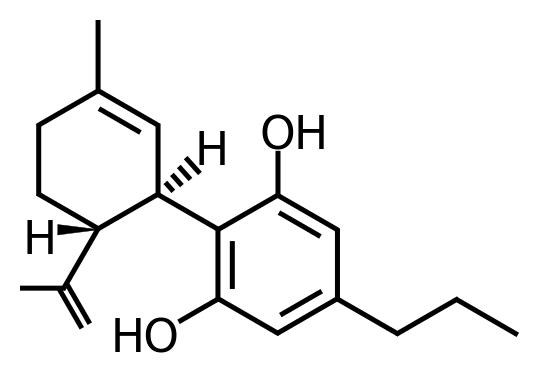Premium Hemp Products

There are two main types of cannabinoids: Pentyl and Propyl. The more common cannabinoids, like CBD, have a ‘tail’ of five carbon atoms, and is the characteristic of the pentyl class of cannabinoids.
The precursor of these compounds, olivetolic acid, is used by cannabis plants to synthesize CBG, or cannabigerolic. CBG is then used to create the cannabinoids THC, CBD, and/or CBC.
The other class of cannabinoids, the propyl class, have ‘tails’ that are only 3 carbon atoms in length. In some cultivars of cannabis, like some that can be found in southern Africa, the precursor used to create cannabinoids is slightly different, and is called divarinic acid. Instead of producing CBG acid, these plants produce CBGV, which will then be further synthesized into the cannabinoids CBDV, THCV, and/or CBDV.
CBDV dominant varieties of cannabis seem to originate from northwest India as well as Nepal. Not much is known about this homolog (a shared ancestry between a pair of structures, or genes, in different species), and a bit of promising research is being placed on this cannabinoid by GW Pharmaceuticals, which we should hear more about in the coming years.
Keep on writing, great job!
Excellent web site. A lot of helpful info here. I’m sending it to a few buddies ans also sharing in delicious. And obviously, thank you in your effort!|
Thank you for the kind words! We do our best to stay up to date on cannabis science, and share what we are able to!